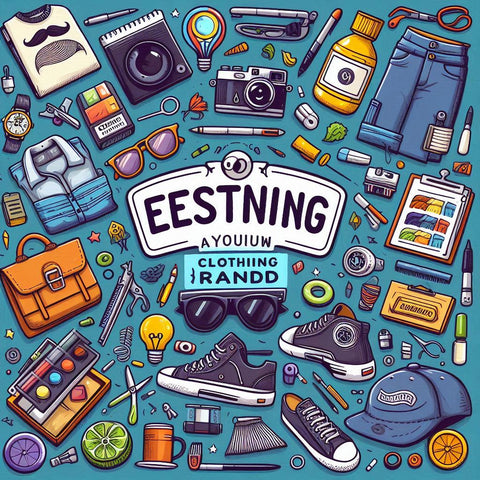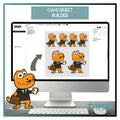Starting your own clothing brand is an exciting journey that allows you to turn your creative vision into a thriving business. However, the process requires careful planning, dedication, and an understanding of your market. Whether you're creating a streetwear line, eco-friendly apparel, or luxury wear, following these essential tips will help you navigate the path to success.
1. Define Your Brand Identity
Your brand identity is the core of your business. It’s what sets you apart in a crowded market and resonates with your target audience.
- Target Audience: Identify who you’re designing for—age, gender, style preferences, and values.
- Brand Values: Determine what your brand stands for, such as sustainability, affordability, or luxury.
- Unique Selling Proposition (USP): Highlight what makes your brand different. Is it your innovative designs, premium fabrics, or commitment to ethical production?
Pro Tip: Create a mood board to visualize your brand's style, tone, and message.
2. Develop a Business Plan
A solid business plan serves as your roadmap, guiding you through each step of building your clothing brand. Key elements to include:
- Mission Statement: Clearly outline your brand’s purpose and goals.
- Budget and Costs: Calculate initial investments for production, marketing, and other expenses.
- Market Analysis: Research competitors and trends to identify opportunities in the market.
- Sales Channels: Decide whether you’ll sell through an online store, social media, or retail shops.
Pro Tip: Use free tools like Canva to create professional presentations for your business plan.
3. Start Small with Your Product Line
Launching with a focused product line allows you to test the waters before expanding. Consider starting with versatile items like:
- T-shirts with unique graphics.
- Hoodies featuring trendy designs.
- Accessories like tote bags or caps.
Pro Tip: Use DTF (Direct-to-Film) printing for high-quality, vibrant designs that cater to diverse customer tastes.
4. Build a Strong Online Presence
In today’s digital-first world, your online presence plays a crucial role in reaching and engaging your audience.
- Website: Create a professional website showcasing your products and story. Platforms like Shopify make it easy to set up an e-commerce store.
- Social Media: Utilize Instagram, TikTok, and Pinterest to showcase your designs and build a following.
- Content Marketing: Share behind-the-scenes videos, fashion tips, and customer stories to connect with your audience.
Pro Tip: Invest in SEO to ensure your website ranks high on search engines, driving organic traffic to your store.
5. Choose the Right Production Method
The quality of your products can make or break your brand. DTF printing is a great option for small to medium-sized clothing brands due to its affordability and exceptional results.
-
Benefits of DTF Printing:
- Works on various fabrics like cotton and polyester.
- Produces vibrant, long-lasting designs.
- Reduces upfront costs with low production minimums.
Pro Tip: Partner with reliable suppliers for consistent, high-quality prints.
6. Price Your Products Strategically
Setting the right price is critical to balancing profitability with customer appeal.
- Cost Analysis: Factor in production, packaging, and shipping costs.
- Market Research: Compare prices with similar brands in your niche.
- Perceived Value: Highlight unique aspects of your brand to justify premium pricing if applicable.
7. Engage with Your Customers
Customer engagement builds loyalty and creates a community around your brand.
- Respond to comments and messages promptly on social media.
- Encourage user-generated content by asking customers to share photos of your products.
- Offer loyalty programs or discounts for repeat buyers.
Pro Tip: Show appreciation by including thank-you notes or small gifts in customer orders.
8. Stay Adaptable and Open to Feedback
The fashion industry is ever-evolving, and staying adaptable is key to long-term success.
- Monitor trends and adapt your designs to changing customer preferences.
- Gather feedback from customers to improve your products and services.
- Experiment with new marketing strategies and collaborations.
Conclusion: Your Brand, Your Vision
Starting a clothing brand requires passion, creativity, and hard work. By defining your identity, planning carefully, and engaging with your audience, you can turn your vision into a successful business. Remember, every big brand started small—take it step by step and focus on building a strong foundation.
Pro Tip: Looking for vibrant and durable designs for your clothing line? Partner with us for premium DTF printing solutions that bring your ideas to life.






